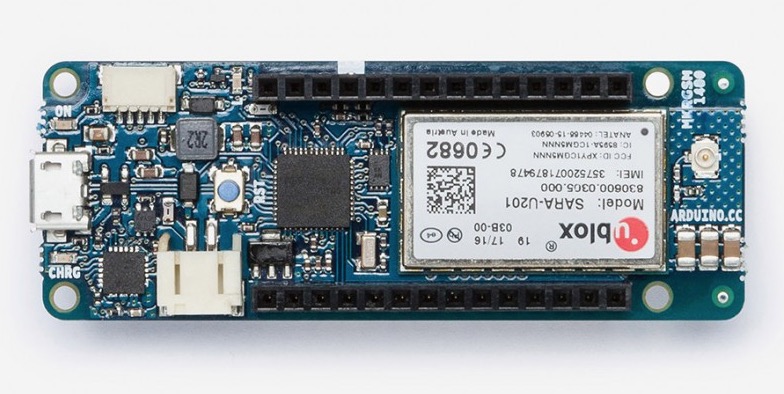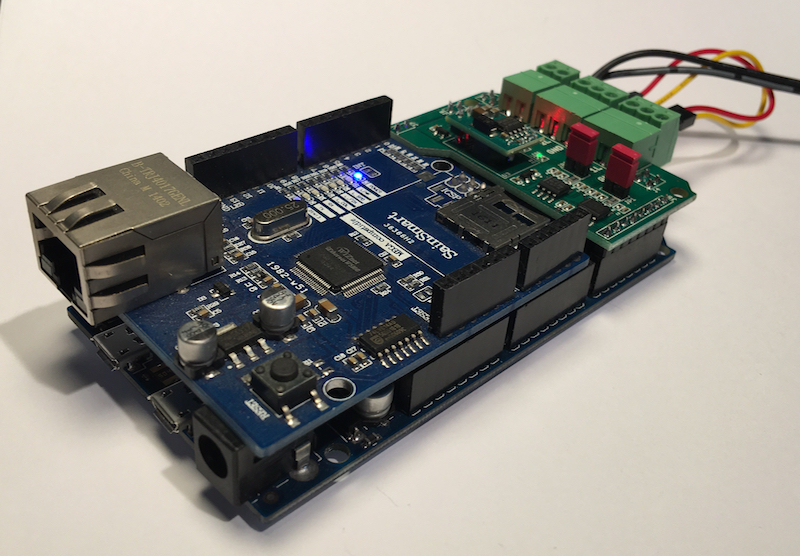Recent Posts
Arduino Introduces WAN Connectivity And Global 2G/3G Communications Capability
Posted by on
Arduino introduced their Arduino MKR WAN 1300 (LoRa) and the Arduino MKR GSM 1400, two boards that are designed to offer a practical solution for developers, makers and enterprises, enabling them to add connectivity to their projects and develop battery-powered IoT edge applications.
The Arduino MKR WAN 1300 delivers LoRa low-power WAN connectivity, and the Arduino MKR GSM 1400 adds global 2G/3G communications capability. Both of the boards feature dimensions of 67.64 x 25mm, making them a choice for battery-powered IoT edge devices in the MKRform factor for applications such as environmental monitoring, tracking, agriculture, energy monitoring and home automation.
Offering 32-bit computational power similar to the Arduino MKR Zero board, the Arduino MKR WAN 1300is based around the Murata LoRa low-power connectivity module and the Atmel SAM D21 microcontroller, which integrates the 32-bit low-power ARM Cortex-M0+ processor, 256KB Flash memory and 32KB SRAM. The board’s design includes the ability to be powered via either two 1.5V AA or AAA batteries or an external 5V input via the USB interface – with automatic switching between the two power sources.
As well as low-power LoRa IoT communications capability, the MKR WAN 1300 offers a set of I/O interfaces, and the Arduino IDE software environment for code development and programming. Other features of the board include an operating voltage of 3.3V; eight digital I/Os; 12 PWM outputs; and UART, SPI and I2C interfaces.
Like the MKR WAN 1300, the Arduino MKR GSM 1400 is also based on the ARM Cortex-M0+ based SAM D21, but integrates the u-blox module to deliver global 3G communications ability. The board also features automatic power switching, however, it uses either a 3.7V lithium polymer (LiPo) battery or an external Vin power source delivering 5V to 12V. While the USB port can also be used to supply 5V to the board, the MKR GSM 1400 isable to run with or without the battery connected.
The MKR GSM 1400 also offers a set of I/O interfaces including: eight digital I/Os; 12 PWM outputs; UART, SPI and I2C interfaces; analogue I/O including seven inputs and one output; and eight external interrupt pins.
More Information on the Arduino MKR WAN 1300 and Arduino MKR GSM 1400...
Arduino-Based ECU Development Board With Dual CAN Bus Interface
Leverage the power of an ARM Cortex M3 32-bit processing capability in combination with a dual CAN Bus interface to create your next CAN Bus or SAE J1939 application or prototype. By combining our dual CAN port interface, the Arduino DUE microcontroller, an OBD2 or SAE J1939 cable, and open-source software libraries you are ready to go with powerful a turn-key Arduino-based dual CAN bus solution.
Use the vast resources of Arduino software (sketches) and hardware components (shields) to create your CAN Bus, OBD2, or SAE J1939 application.
 Loading... Please wait...
Loading... Please wait...


